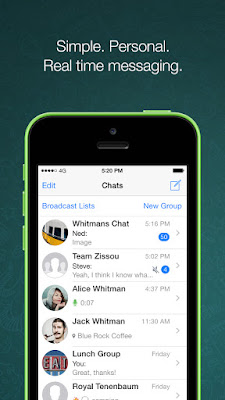In previous lesson I have learnt about Computer Mediated Communication (CMC) and ESL. CMC is any form of communication or interaction between two or more people via different computers through network connection. It started in the late of 1980 and 1990 parallel with the introduction of Communicative CALL as well as the usage of e-mail and forums have became widespread. There are two types of CMC which are
Asynchronous CMC
The communication is not synchronised which means the messages are not exchanged and reply immediately as the other users are not available at the same time. Example of asynchronous CMC are :
 |
| E-mail |
 |
Blog |
Synchronous CMC
The communication is synchronised as both of the participants are available at the same time. The messages can be exchanged instantly and allows direct communication so that we received the feedback immediately. Example of Synchronous CMC are :
 |
| Instant Messaging |
 |
Video Conferencing |
In the late 2000s, CMC was being implemented for distance learning as synchronous CMC allowed teacher and student to interact with each other without being in the same place but, it is not recommended to learn through video conferencing or e-tutoring. This is because, for me learning environment is very important in order to fully maximised the learning process as well as the teacher's presence in the classroom.
Collaborative Learning
Collaborative learning is a learning that occur by using computer as it can enhance the interactions between students and group work. It is not limited only for discussion for the students but it could be a platform for the student to increase their problem solving skills by using Google Doc, Google Drive and Blogs Messenger.
 |
Google Docs |
There are many advantages and disadvantages of using CMC in learning. For example, some of the students' self esteem could be higher as they will not have to speak in front of the other students in discussing about the certain subject. While the disadvantages of using computer as communication in learning it might be problems with access to technology. We know that, not all of the people are able to own a laptop or computer and not all of the places is available for internet connection. Take some example in rural areas as the internet connection might not be able to access from those areas. In conclusion, for me there are the times where the CMC would be very beneficial towards the students but sometimes learning by interacting in real life is very more exciting that filled with the emotions and feeling.💕











